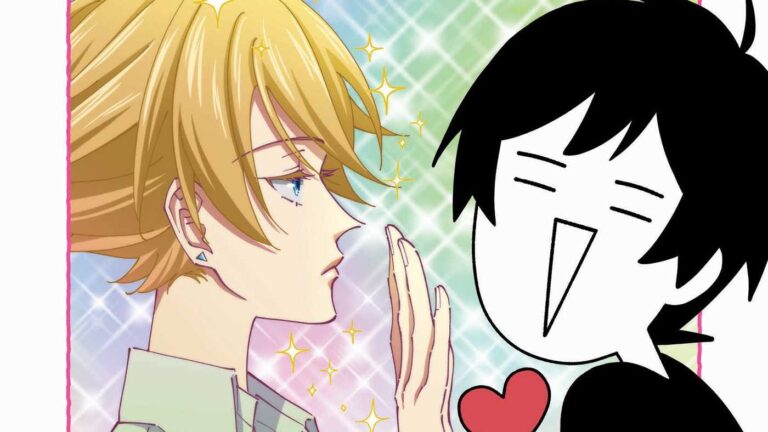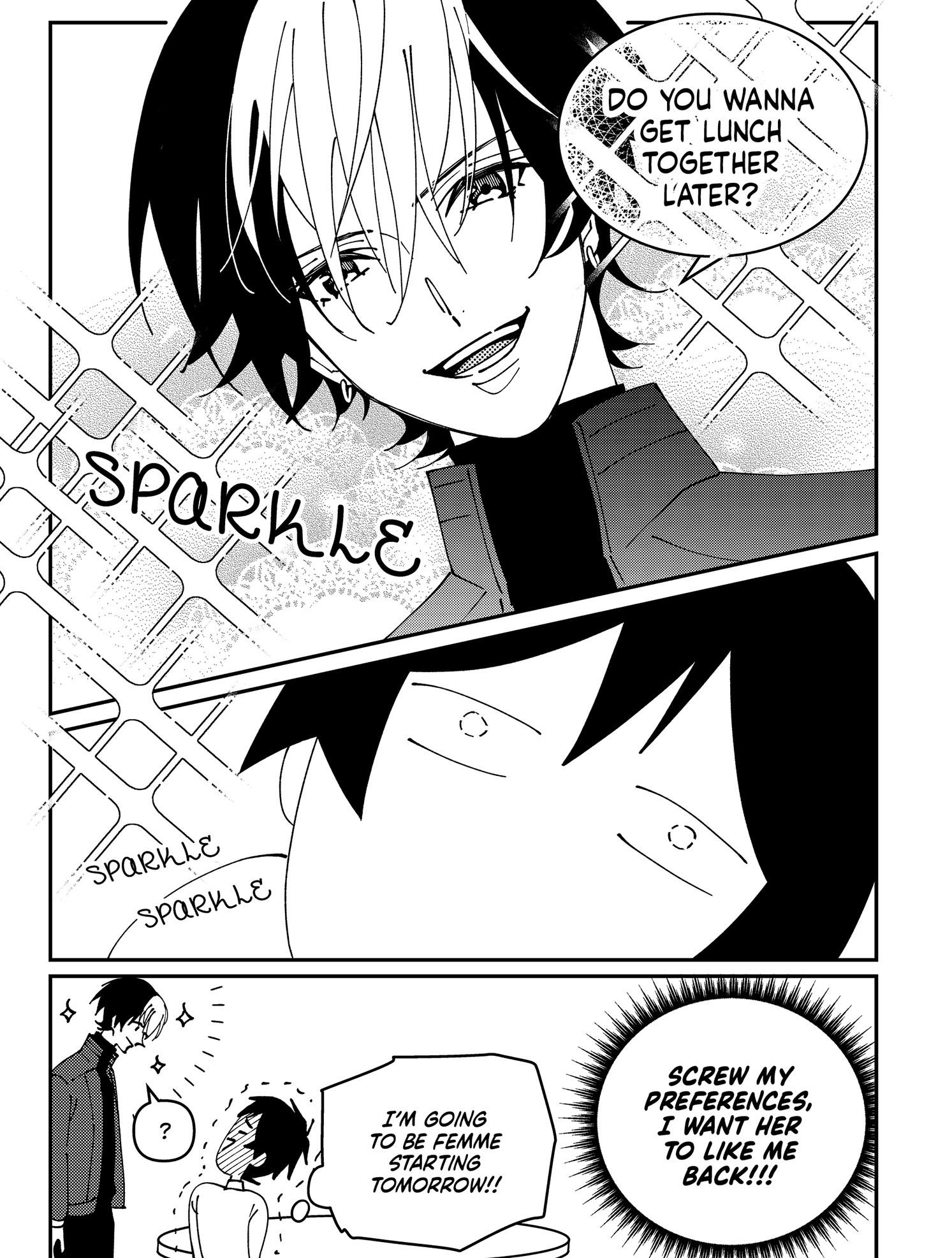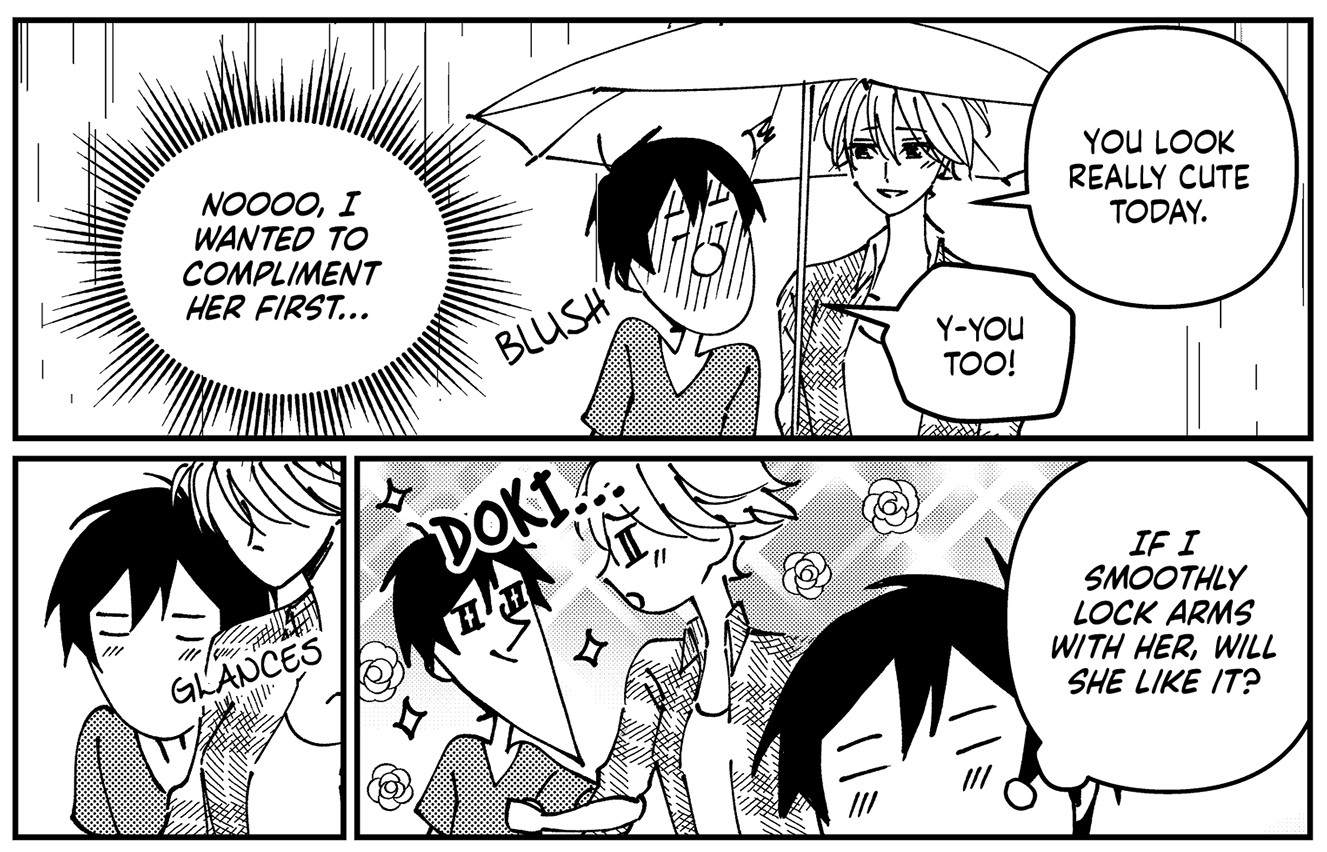The unique struggles of butch women dating other butch women, the difficulty of coming of age amidst familial expectation and social convention, the bliss of finding oneself and seeing a path toward growth — manga artist Mieri Hiranishi spins these into a remarkable narrative in The Girl That Can’t Get a Girlfriend. Very rarely does manga at once captures me with its story and its style. Most series nowadays follow industry-approved tropes and re-tell the same story with a few minute differences (how many seasons have we seen a “new” magic harem isekai pop up?) and never veer into anything insightful or new.
This manga is in all ways quite the opposite; The Girl That Can’t Get a Girlfriend is mostly nonfictional (some names and details are changed for privacy) and based on the actual lived experiences of the author. It’s quite clear in the storytelling too — I found myself fully captured as I read through every page and finally hitting “the end” felt like I was waking up from a dream I didn’t want to leave. The narrative and concept are something I’ve never seen or personally experienced. Despite that, I found myself relating more and more to Mieri the more I read her words and thoughts on the page. In this sense, The Girl That Can’t Get a Girlfriend strikes the precarious balance between being universally understandable and being unquestionably unique in its perspective. I doubt there will ever be anything that can replicate it, certainly not to the level of a tired trope.
A Refreshing Romance Story
The Girl That Can’t Get a Girlfriend tells mangaka Mieri Hiranishi’s own personal story of dating butch / androgynous women as a butch woman herself. The story starts during her college years as she moves through LGBTQ+ clubs, friend groups, and dating apps trying to find a lovely girlfriend. That last point especially was something quite new. Most manga (even romance manga) tend not to wade into dating app territory beyond offhand mentions of the apps’ existence. Whether from dating apps or organic interactions, many of Mieri’s romantic pursuits are difficult and don’t end well. She doesn’t have much dating experience at this point and most of her crushes on other butch women went nowhere but her mind. Then, she finds Ash, who finally gives her the reciprocal feelings she’s wanted, and crushes incredibly hard (relatable) before navigating the difficult aspects of a relationship and personal presentation.
This is a kind of story that isn’t told often and certainly deserves to be told more. Very few manga and anime focus on love between women. Many that do either do so via male-gaze-oriented and oversexualized relationships or via cute, femme-presenting women. As Mieri points out through her inner-monologue style narration within the manga, butch women tend to date femme women and don’t have eyes for butch and androgynous women themselves. Mieri is unsure how to present herself in order to have the kind of relationship she wants. There are constant questions of what the “right” ways to show up for someone else are and to what extent one should change for those that they love (or want to love).
The Girl That Can’t Get a Girlfriend interrogates these questions with alternating story progression, sections of personal thought, and constant commentary throughout. A series of thoughts as straightforward as “what should I wear to this date” is broken down into its most component parts and worked through in the exact order a nervous person would actually do in preparation for a date. This is part of why the story is so gripping; following the exact arc of thoughts in their exact order and intensity makes it natural and intuitive for the reader to imagine themselves in Mieri’s shoes.
Blending Introspection Into Active Storytelling
This introspection and expression of thought is the first artistic element of this manga that I latched on to. Mieri’s image in the manga is often low-fidelity and drawn with simple lines and cartoonish features. In comparison, other characters (especially the women being crushed on) are drawn with phenomenal attention and detail as if they were lifted straight from a shojo manga. This is both a reflection of Hiranishi’s personal perception of the beauty of others relative to herself and a means of showing the difference between Mieri’s emotional state at any given time. Beside the image of Mieri is often a thought bubble that extends to the size of the entire manga panel. In these panels, we get to see imagined scenarios and different “what ifs” as well as memories and scenes of thoughts related to what’s currently happening. The story has a relatively linear storyline in terms of the progression of time. But, the interpolation of thoughts and memories gives it depth such that small moments touch upon many parts of that storyline.
Without spoiling the latter portions of the manga, these thought-heavy sections are also the sections that open the window in Mieri’s mind the most. This manga is retrospective. It obviously showcases the events as they were perceived at the time but also how they are perceived in the memory of the present-day author. As the story progresses the emotion that went into drumming up memories is impressively tangible. On top of that, every personal victory is one that was clearly massive in real life. To compare it to the depth of impact in a shonen or action heavy series, consider the ways authors there demonstrate power and strength. They either allow characters to blow up planets or beat up other characters who blow up planets to communicate “hey, this dude can also probably blow up planets.”
Doing that with the strength of emotion is a lot less clear. How does one communicate the stress of swiping through a dating app and feeling the frustration of finding everything but what you’re looking for? How does one communicate the despair of achieving success that others value but not what you do? There is no one way to do any of these things and following a formula of some kind can’t communicate those emotions. The only way to do so is to tap into the raw emotions themselves and pour those into every page. Mieri Hiranishi combines both her memory of feeling at the time and the feeling of returning to that memory, resulting in a veritable umami-bomb of emotional depth and narrative complexity. Despite how personal those perceptions are, the manga is also dutiful in pointing out that this story is indeed one person’s story, making sure not to invalidate or deny space to other people’s experiences and perspectives. It’s something that is only possible from the degree of care put into this story and its memory.
Mieri Hiranishi is an Artist to Remember
This is a manga you will likely read in one sitting. This isn’t to say it’s short; the print volume is 208 pages. You’ll read it in one sitting because it’s a story that demands attention and pays for it with quality and dedication. This is Mieri Hiranishi’s debut work and it’s an absolutely incredible one. The work has been followed by thousands through social media and a Patreon campaign. It started as a hobby that she shared online as a webtoon/comic while working a full-time office job. Now, The Girl That Can’t Get a Girlfriend has its official release to the world on (appropriately) Valentine’s day, February 14th. Viz is publishing the manga in English under its “Viz Originals” label. Whether you’ve found romance, are looking for it, or want nothing to do with it, you will definitely appreciate this journey into one woman’s quest for the short-haired lovely girlfriend of her dreams. You can check out the manga trailer below:
Copyright © 2023 by Mieri Hiranishi
Anime Corner received a review copy of The Girl That Can’t Get a Girlfriend manga for review purposes.



Participate In Discussions